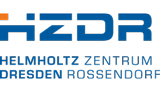Structural Materials
The safety of nuclear reactors critically depends on the mechanical behavior of structural materials under harsh environmental conditions (neutron irradiation, high temperatures). In the framework of the program NUSAFE (Nuclear Waste Management, Safety and Radiation Research) of the Helmholtz Association we characterize irradiated reactor materials from the nm-scale to the macro-scale. Our focus:
- Long-term irradiation effects in reactor pressure vessel steels of running and new-build reactors in the context of lifetime extension
- Assessment of the irradiation tolerance of innovative materials for future reactor concepts including nuclear fusion (e.g. ferritic/martensitic Cr-steels, oxide dispersion strengthened (ODS) steels, the emerging class of high-entropy alloys)
The methodical spectrum covers the full functional chain from nm-scale irradiation-induced defects to macroscopic mechanical properties and aims at the identification, better understanding and mitigation of irradiation effects. The new insight substantially contributes to the scientific background for the safety assessment of nuclear reactors. The research relies on a unique infrastructure including the hot cell labs for the investigation of neutron-irradiated materials as well as the HZDR Ion Beam Center for ion irradiation experiments.
Our expertise:
- Mechanical testing of irradiated materials
- Nano-/Microstructure characterization of irradiated materials
- Ion irradiation to emulate neutron irradiation effects
Current projects
- Innovative structural materials for fission and fusion
(INNUMAT, EU, HORIZON-EURATOM, 2022-2026) - European Database for Multiscale Modelling of Radiation Damage
(ENTENTE, EU-H2020-Euratom, 2020-2024) - Fracture mechanics testing of irradiated RPV steels by means of sub-sized specimens
(FRACTESUS, EU-H2020-Euratom, 2020-2024) - Structural Materials research for safe Long Term Operation of LWR NPPs
(STRUMAT-LTO, EU-H2020-Euratom, 2020-2024) - Untersuchungen zum Ausheilverhalten von Reaktordruckbehälterstählen bei niedrigen Temperaturen
(WetAnnealing, BMWI, 2020-2025) - Physical modelling and modelling-oriented experiments for structural materials 2
(IOANIS2, EERA-JPNM Pilote Project, 2023 - 2027, coordinator HZDR) - In-situ experiments for nuclear applications
(INSITEX, EERA-JPNM Pilote Project, 2023 - 2027) - On the use of small punch as high-throughput screening technique to extract mechanical properties of ion irradiated materials
(SHERPA, EERA-JPNM Pilote Project, 2023 - 2027)
Latest Publication
ASTM interlaboratory study on tensile testing of AM deposited and wrought steel using miniature specimens
Dzugan, J.; Lucon, E.; Koukolikova, M.; Li, Y.; Rzepa, S.; Yasin, M. S.; Shao, S.; Shamsaei, N.; Seifi, M.; Lodeiro, M.; Lefebvre, F.; Mayer, U.; Olbricht, J.; Houska, M.; Mentl, V.; You, Z.
Abstract
An interlaboratory study, involving eigth international laboratories and coordinated by COMTES FHT (Czech Republic), was conducted to validate tensile measurements obtained using miniature specimens on additively manufactured (AM) components and artifacts. In addition to AM 316L stainless steel (316L SS), a wrought highstrength steel (34CrNiMo6V, equivalent to AISI 4340) was also used. Based on the results, a precision statement in accordance with ASTM E691 standard practice was developed, intended for inclusion in a proposed annex to
the ASTM E8/E8M tension testing method. The primary outcomes of the study highlighted the agreement between yield and tensile strength measured from miniature and standard-sized tensile specimens. Furthermore, most tensile properties exhibited similar standard deviations, offering users insight into the efficacy of miniature specimen applications.
Keywords: 316L stainless steel; Additive manufacturing; High-strength steel; Miniature specimens; Tensile tests
-
Theoretical and Applied Fracture Mechanics 131(2024), 104410
DOI: 10.1016/j.tafmec.2024.104410
Permalink: https://www.hzdr.de/publications/Publ-39060
Team
Head | |||||
| Name | Bld./Office | +49 351 260 | |||
|---|---|---|---|---|---|
| Dr. Eberhard Altstadt | 801/P151 | 2276 | e.altstadt | ||
| Dr. Cornelia Kaden | 801/P102 | 3431 | c.kaden@hzdr.de, c.heintze | ||
Employees | |||||
| Name | Bld./Office | +49 351 260 | |||
| Dr. Frank Bergner | 801/P150 | 3186 | f.bergner | ||
| Dr. Paul Chekhonin | 801/P146 | 2149 | p.chekhonin | ||
| Vanessa Dykas | 801/P105 | 3363 | v.dykas | ||
| Mario Houska | 801/P148 | 2242 | m.houska | ||
| Libang Lai | 801/P153 | 3032 | l.lai | ||
| Jens Pietzsch | 801/P032 | 2814 3550 | jens.pietzsch | ||
| Dr. Andreas Ulbricht | 801/P146 | 3155 | a.ulbricht | ||
| Tilo Welz | 801/P032 | 2814 | t.welz | ||


